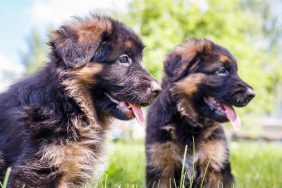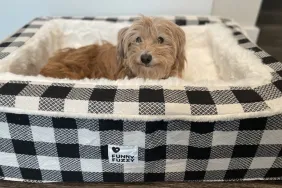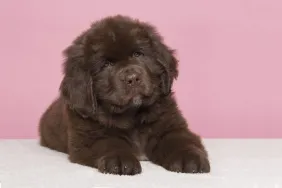If it’s been a while since you lived with a puppy, you’ll undoubtedly have forgotten how much damage can be done with 28 pointy baby teeth that a vampire would envy.
In between puppies, most of us forget just how quickly they can get stuff off the end tables, chairs, counters, and other areas we think are safe. But you will quickly remember.
Life will be far easier if you puppy proof the house before your curious newcomer sets a paw inside your home. Like human toddlers, puppies will put anything into their mouths that will fit, and sometimes things you’d swear couldn’t fit.
For items that won’t go in, chewing is a normal response. While it probably won’t matter too much if your puppy swallows a button, the battery from a remote control is another matter.
Here are a few puppy proofing tips to help keep your pup safe in their new home.
What To Add
A crate is a big safety boon during this stage of life. It’s best not to leave your puppy unsupervised while they’re still trying to explore the whole world with their jaws. Crate training can benefit any dog by keeping them safe and giving them a place to retreat and relax.
Baby gates can also help you block off dangerous areas of the home or rooms you don’t want your puppy to enter.
If your puppy is especially curious, you may also want to invest in some childproof locks to keep low cabinets safely closed.
Finally, some pet parents enjoy the peace of mind they get from having a pet monitor camera in their homes. These can help you keep an eye on your dog when you’re in another room or away from home.
What To Remove

First, take care of the easy stuff: lie down on the floor and look around for nails, decorative items, buttons, needles, socks, craft items, and anything else that a puppy might swallow or chew. Put all of these items someplace they can’t reach.
Next, tackle the bigger issues:
- Electrical cords are one of the top dangers to puppies. Pups love to sink their teeth into them, which is a bad idea for a number of reasons, including the risk of electrocution, burns, and fire — not to mention that you could have to replace all of the cords in your home theater system. Wrap exposed cords in spiral cable wrap, cord concealers, or PVC pipe. Unplug cords when not in use.
- Tie up drapery cords to get them out of the way.
- Place in a high spot or locked area anything that holds chemicals or toxins, such as medication, household cleaners, antifreeze, rat poison, insecticides, toilet bowl cleaner (keep your toilet lid down if you use automatic bowl cleaners), mothballs, and so on. Don’t rely on glass bottles or plastic boxes to keep the pup out. You’d be surprised at what a puppy can get into. Plan ahead for how big they’ll grow to be so you only have to move them once.
- Certain houseplants are toxic, including the azalea, calla lily, dieffenbachia, poinsettia, and philodendron. Outside, some dangerous plants to ingest include belladonna, buttercups, creeping Charlie, elderberry, daffodils, poison ivy, poison oak, rhubarb, stinging nettle, white clover, and yew.
- Certain common foods are harmful, including chocolate, onions, alcohol, raisins, grapes, coffee, tea, and foods high in fat, sugar, or salt. Consequences of eating chocolate range from diarrhea to seizures and death.
- Kitchen and bathroom trash is seen as nirvana. Put it up high or enclose it where the puppy can’t reach it, or you’ll find banana peels, coffee grounds, tissues, razors, and used bathroom products strewn about.
- Keep clothing put away, particularly items such as socks, nylons, and underwear. Make laundry baskets inaccessible.
- Any tobacco product is toxic, including gum and nicotine patches.
Places To Keep Off-Limits
Consider using safety gates and/or childproof latches to prevent access to:
- Stairwells
- Open balconies
- Open upper-story windows
- Upper decks
- Pools, diving boards, and hot tubs
- Medication cabinets
- Kitchen sink cabinets
- Compost bins
- Space heaters
- Fireplaces, fire rings, and wood stoves
- Litter boxes (litter can cause an obstruction)
- Garages or sheds where toxic materials such as charcoal lighter, gasoline, motor oil, paint and paint thinner, fishing hooks and lines, and pesticides are stored. Antifreeze and rat poison are particularly deadly.
Sure, it can feel overwhelming to look around and notice all the potential hazards, but with a little foresight on your part, and judicious use of a crate and safety gates, your puppy should make it to adulthood without any frightening or expensive incidents.
And remember to relax. Their puppyhood will be over all too soon, and you’ll be surprised at how much you’ll miss being able to truthfully tell the kids to pick up their toys or the puppy will destroy them.
Have you done any puppy proofing in your home? How do you prepare your living space for a new dog? Let us know in the comments below!









